Do you like exotic travel? Moroccan tales. Sahara Desert. Mhamid and Ksar Draa River Valley
Part 1

Street in the old Ksar in the Draa River Valley
That's just to get to the ocean it succeeds only in the spring, when the snow melts the Atlas Mountains, and the rest of the year remains extremely affluent first third of the river - about two or three hundred kilometers. At this time, almost all the water from the Draa is spent on irrigation long oases chain in its valley, stretching across the red-hot barren terrain from Ouarzazate to the Mhamid, well, and that her small part that remains after this - safely dissolve in the hot sands of the desert.
Valley of the Draa River - a unique detached region, bounded on the north by the High Atlas, Anti-Atlas in the west, from the south-east - a desolate Sahara. This is the place where the southern boundary of the arable land, and the distance is still measured by time - in days that you want to spend to get to their destination on a camel. And somewhere along the way in Mhamid can still find the old sign "Timbuktu - 52 days' journey", that is how much time it will take to cross the Sahara in the traditional way.
The office of the company Caravane de Reve, at the invitation which we have come to Mhamid, several maps hanging on the wall. On one of them depicts the Draa Valley. Immediately after args begins a series of six oases, the latter of which is the Mhamid. After him, there is nothing, only the endless sea of sand, in which most of the year and drowning the river Draa.
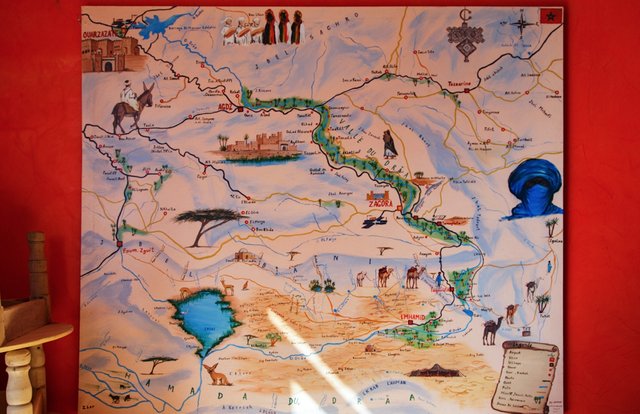
Mhamid - one of two places in Morocco, from where you can get to ergs - sandy areas of the Sahara, the ones we are used to seeing in the desert photos. The second is a place - a tourist village of Merzouga, to her two hundred kilometers from here, if you look at the line, and four hundred, if you go on the road. Close to Merzouga erg Chebbi is, it is there
"To see the Sahara" go 99% of tourists visiting Morocco. If your goal - to walk in the dunes of a large crowd to the sound of jeeps and quads, you - there too. Mhamid - Merzouga complete opposite. This - the best backyard of Morocco, the last bastion of civilization on the edge of a deserted desert. In the vicinity of the oasis is located just a few ergs. We visited two of them - affordable and easy Lihoudi and distant and deserted Shigaga.
Today, the Moroccan authorities have all the forces trying to turn Mhamid a major tourist center - even chic new highway built from Zagora. But while tourists still prefer to go to more distant but more publicized Merzouga. To tell the truth, in this there is some reason, still dunes there - and above, and more beautiful.
Today looks like Mhamid.
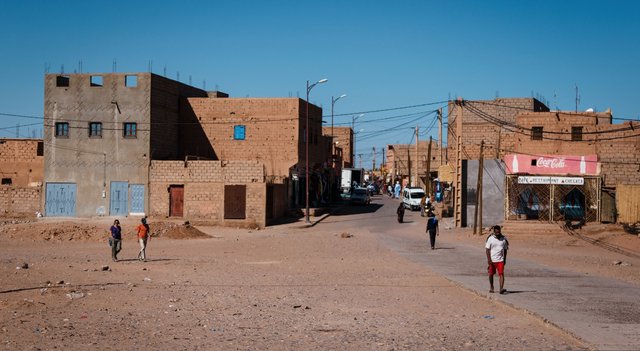
This is - the main street.
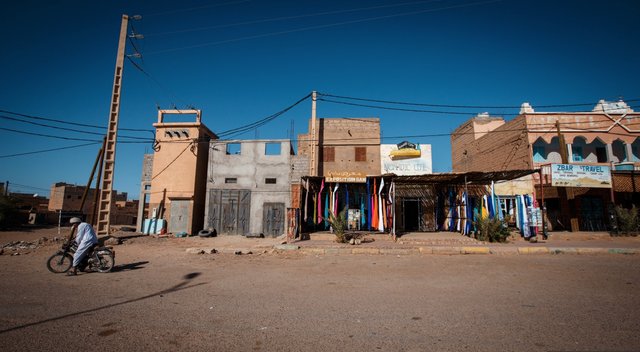
But - secondary.
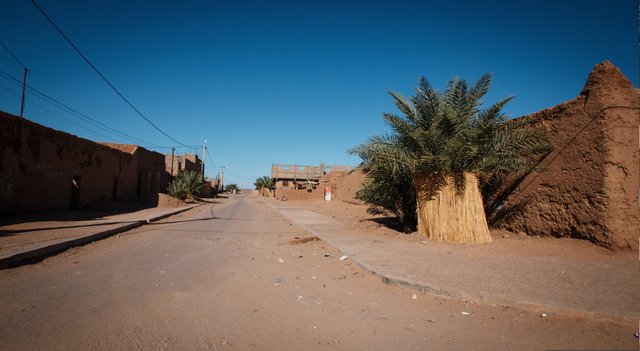
The inhabitants of the Draa Valley called Drava (singular - Drava).
Directly in the vicinity of Mhamid live four different nationalities: the Berbers, Saharawi, Tuareg and Ihor Kharatin. Europeans consider the Tuareg and Berbers Saharawi same, but for the locals it - three different people. Let me remind you that in the European tradition of the Berbers called the entire population of North Africa, to accept Islam. As well there is the notion of "the Moor" - a common collective name of all the inhabitants of the Maghreb without exception, given to them by the Spanish and the Portuguese.
But back directly to the peoples encountered in Mhamid.
Saharawi and the Tuareg - the inhabitants of the desert.
Saharawi live in desert areas in Morocco (mostly - in Western Sahara), Mauritania and Algeria. With the Arabic word literally translates as "someone from the desert." Saharawi speak Hassani language - colloquial varieties of Arabic, although some of them known as Berber.
Tuareg mostly live in Niger, Mali, Algeria and Mauritania, although some of them can be found close to Mhamid. More they are called "blue men" - what they wear capes indigo and the same scarves that cover the face and leaving open only the eyes. Tuareg speak shilhskom, a group of Berber languages. The latter, incidentally, is one of the official languages in Morocco and is used in the state paperwork. To use Tifinagh letters - alphabet, derived from tifinagh, which, in turn, is - nothing more than a highly modified letter Phoenicians.
Berbers, in the understanding of local, - those who historically resided north of the Sahara (but not in it). Berbers speak different dialects of Arabic and Berber languages.
Ihor Kharatin - dark skinned Africans who came to Morocco across the desert from the more southern regions. Ihor Kharatin speak two languages - Hassania and shilskhkom. The origin of the word "Ihor Kharatin" It is not known, according to one version it is - derived from the Berber word "black".
In contrast, the concept of "Ihor Kharatin" in Arabic as there is the word "Beydali", which refer to the population of North Africa with lighter skin than those Ihor Kharatin. In general, according to the Arab tradition, the entire population of the Maghreb, and is divided into Ihor Kharatin beydanov.
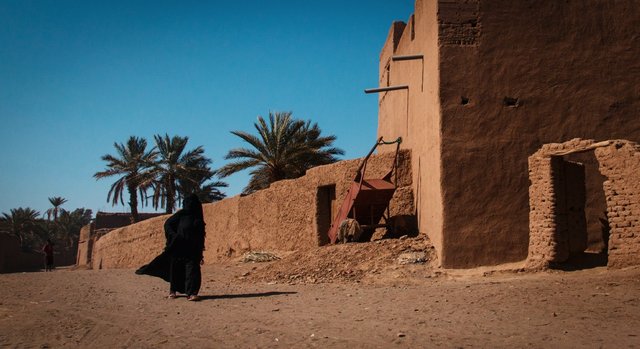
Valley of the Draa River is known for its QSAR - traditional fortified adobe villages. In total there are here - more than a hundred, and they are found almost everywhere.
For example, near the modern Mhamid located Ksar Old Mhamid. In it reside Ihor Kharatin, who came here from Mali many years ago.
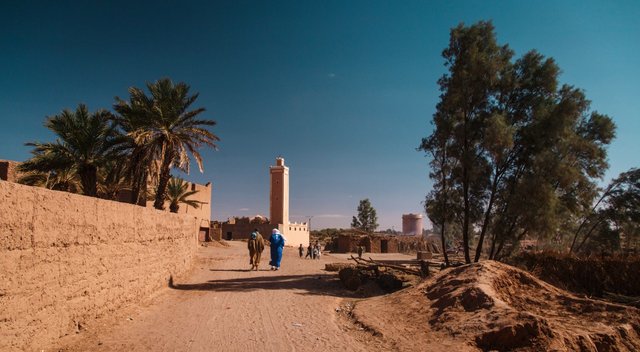
One of the entrances to the Ksar.
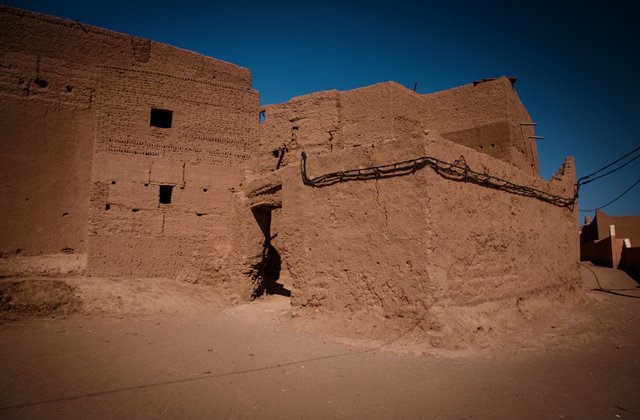
In the center of the photograph - not a break in the wall, and one of the main streets of the settlement.
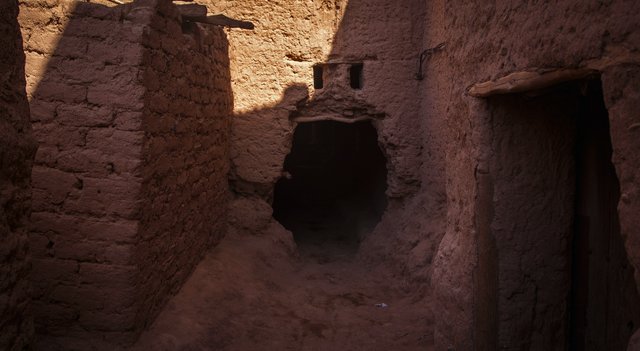
Inside - a dark and ominous. The feeling - as if hit in some old horror movie.
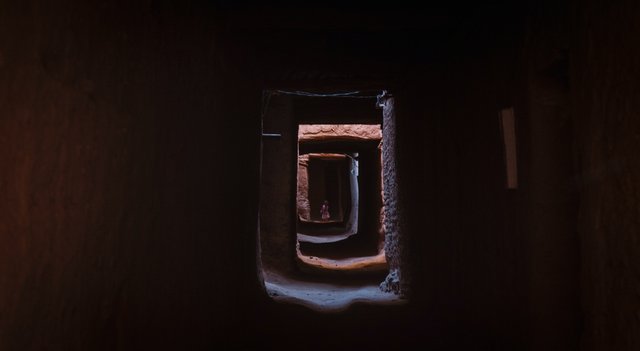
The air in the streets of Ksara - thick and real estate. Through it, you need to wade actively helping himself with his hands, like Frodo, transcending the cobwebs in the cave Shelob.
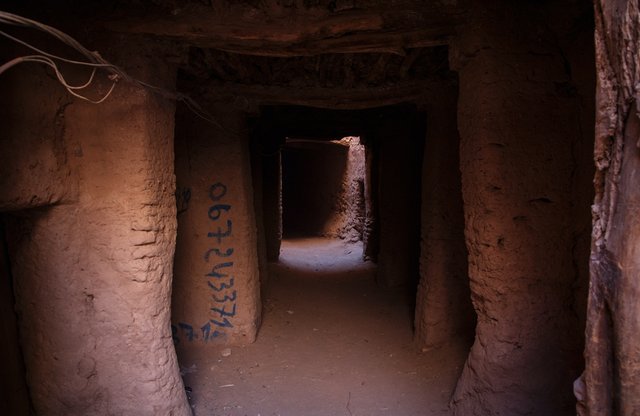
Planning Ksara more like a tangled maze. Let settlement - quite small, but get out of it the first time - not so simple.
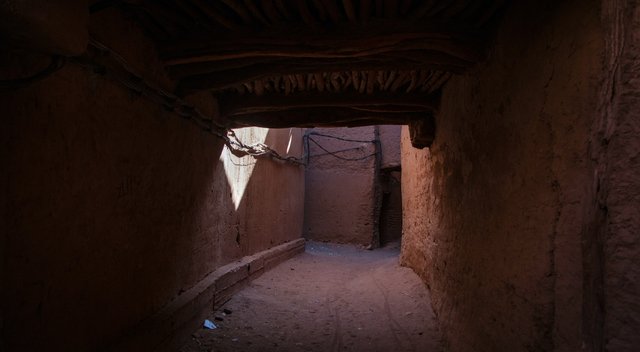
Despite the fact that in the Old Mhamid even have electricity (and not every Moroccan village can boast), place it - did not travel.

To appear here, without local guides - it is not recommended.
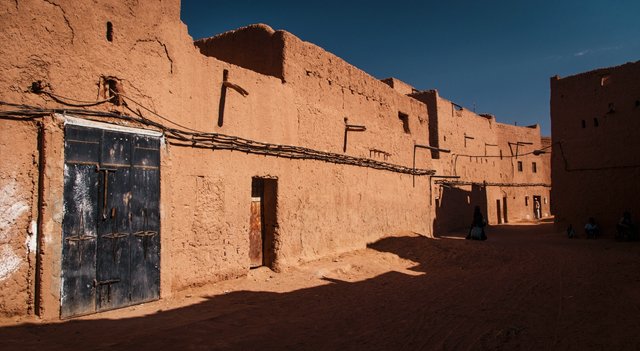
Choose. And we go to the other Ksar - Oulad Aydriss located just above the river. A settlement passes novёhonkaya road connecting Zagora to Mhamid.
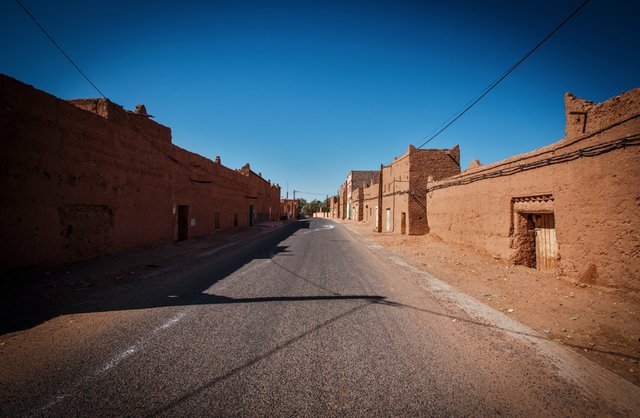
In Oulad Aydriss Berbers live.
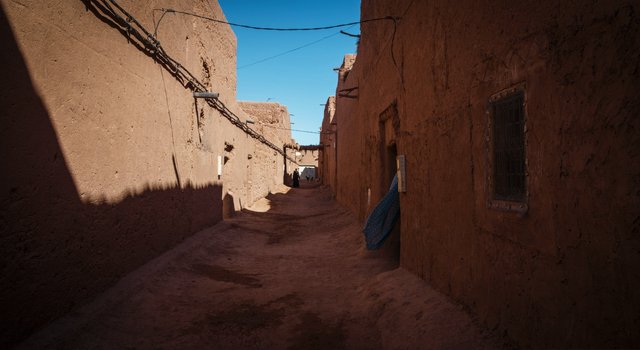
Most of the streets - traditionally covered and dark.
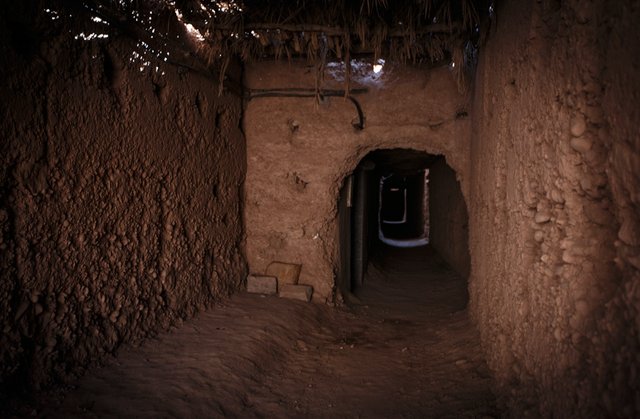
On the site of an old coaching inn ethnographical museum is located. Inside - two and a half floors of beauty.
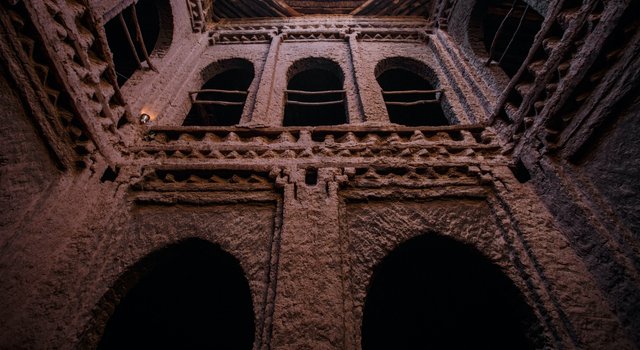
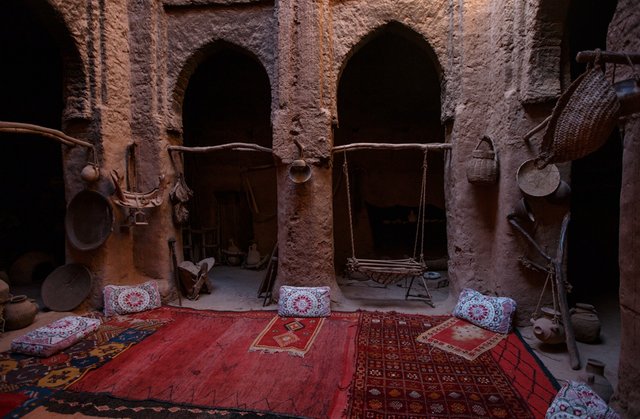
The museum - many exhibits collected in the surrounding villages.
For example, the traditional cradle. Next to it - the hearth. They do not accidentally located next door - a woman had to be at the same time with one hand to swing the cradle, the other - to cook food.
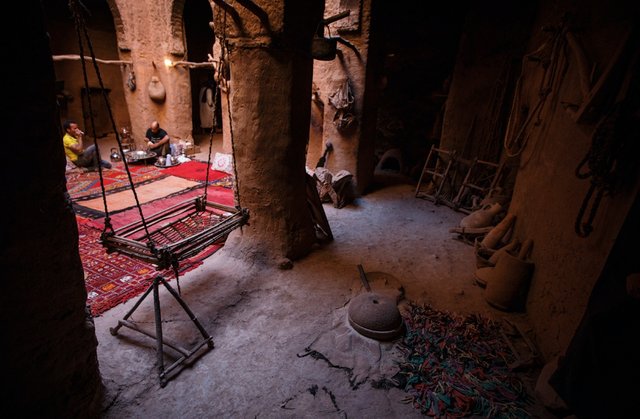
Collection of traditional for these places wooden door bolts.
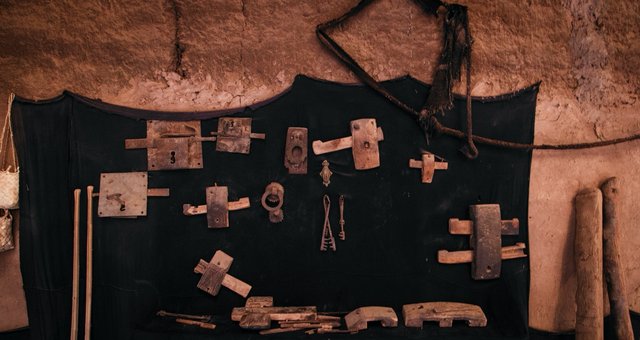
The guide told us that they were very strong and it can protect the house from intruders.
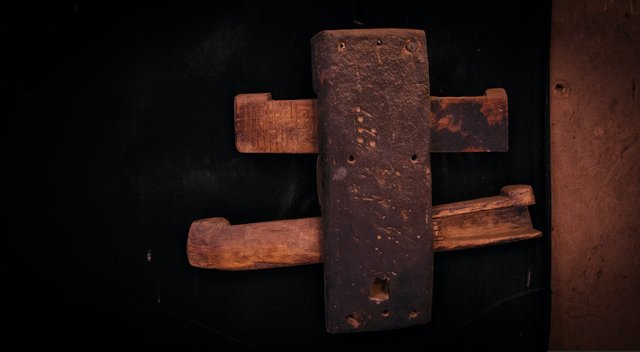
Traditional carpets.
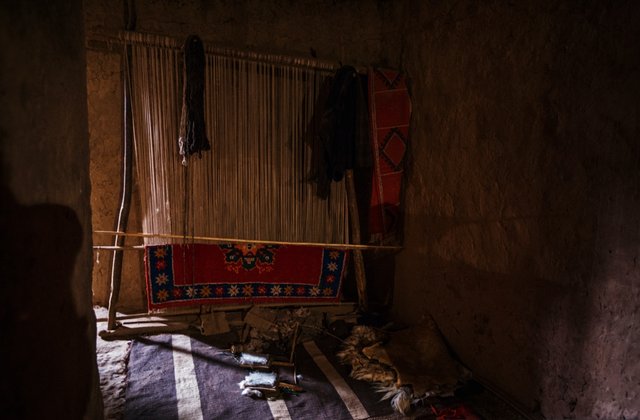
Traditional board game - Kalah. And traditional musical instruments.
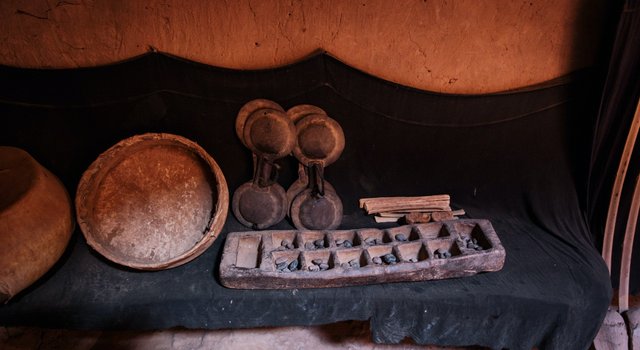
Traditional lamp - from kerosene to gas.
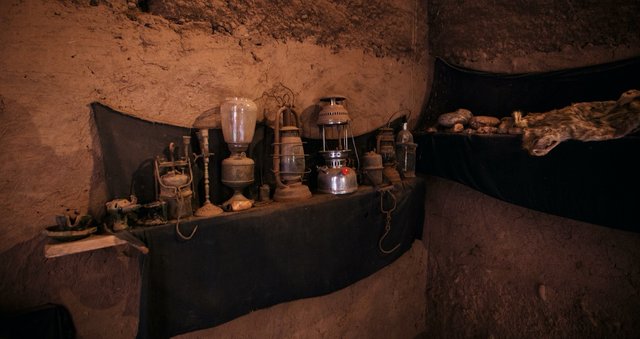
Traditional jars and attachment for their transportation on donkeys and camels.
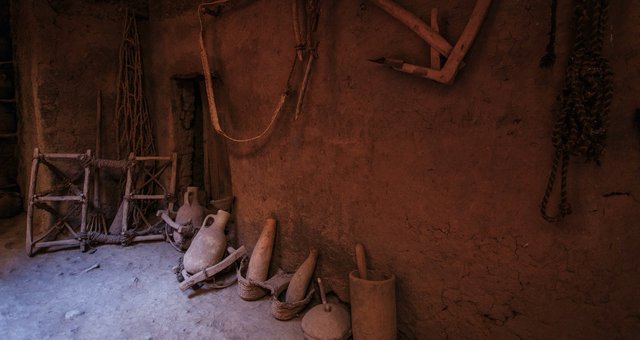
The traditional kitchen utensils.

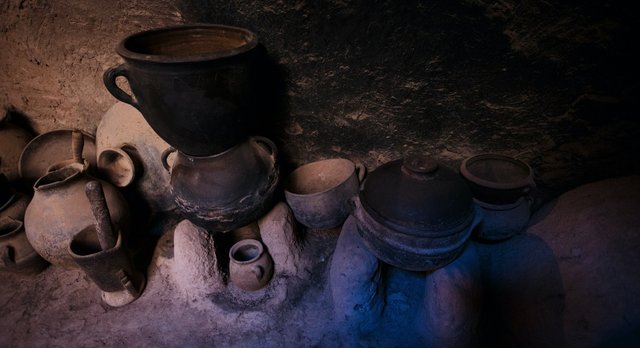
Conventional devices to carry water and supplies.
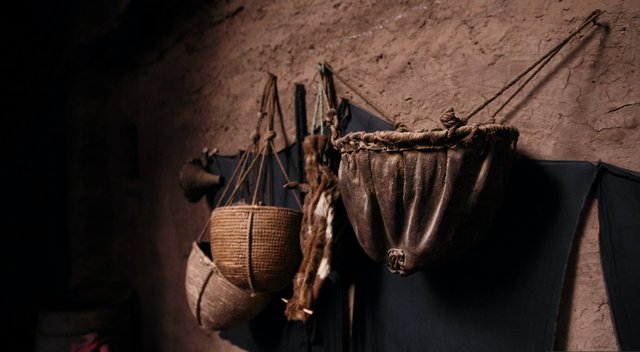
Traditional medical drugs and devices.

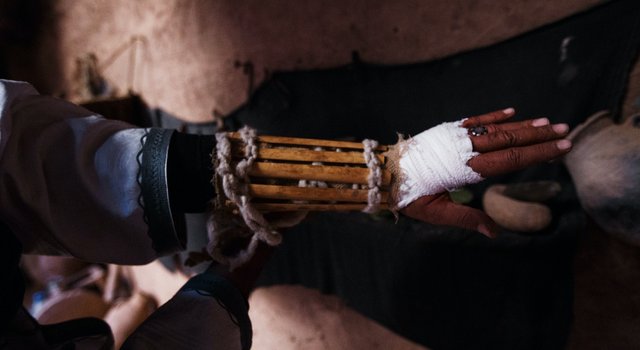
Since Muslim women should hide his face under a niqab for them was invented suspension system, prompting the surrounding status of women. If it was two chains, which meant that the woman is married. If the chain has been left, it meant that a woman - a widow. If right, then - a virgin.
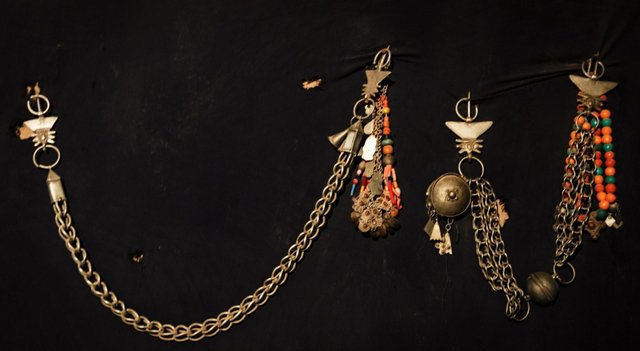
At the far end of the building there is a small lockable room. In it barricaded in case of attack, and, sitting on the pots with food and water, waited siege. Reserve enough food is usually for a couple of days - during which time the invaders started or Meret starve or go home.
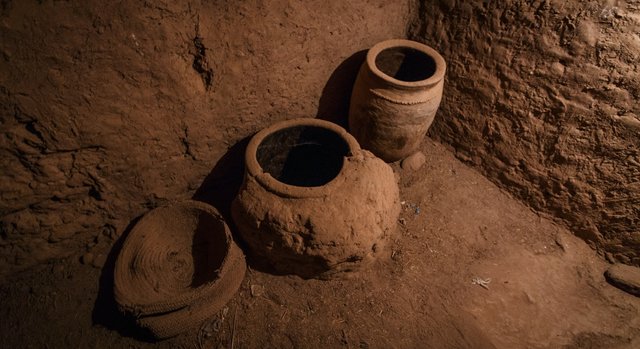
Found here (translated from Russian): https://translate.google.com/translate?hl=en&sl=ru&u=http://kezling.ru/travels/moroccan-fairy-tails-8/&prev=search If this is you, please provide verification.
Upvoted
Upvoted
Upvoted
cool photo
Thank you.
Keep up the great work @basay007
Upvoted
Hi! This post has a Flesch-Kincaid grade level of 6.9 and reading ease of 76%. This puts the writing level on par with Stephen King and Dan Brown.
Nice @basay007
Shot you an Upvote :)